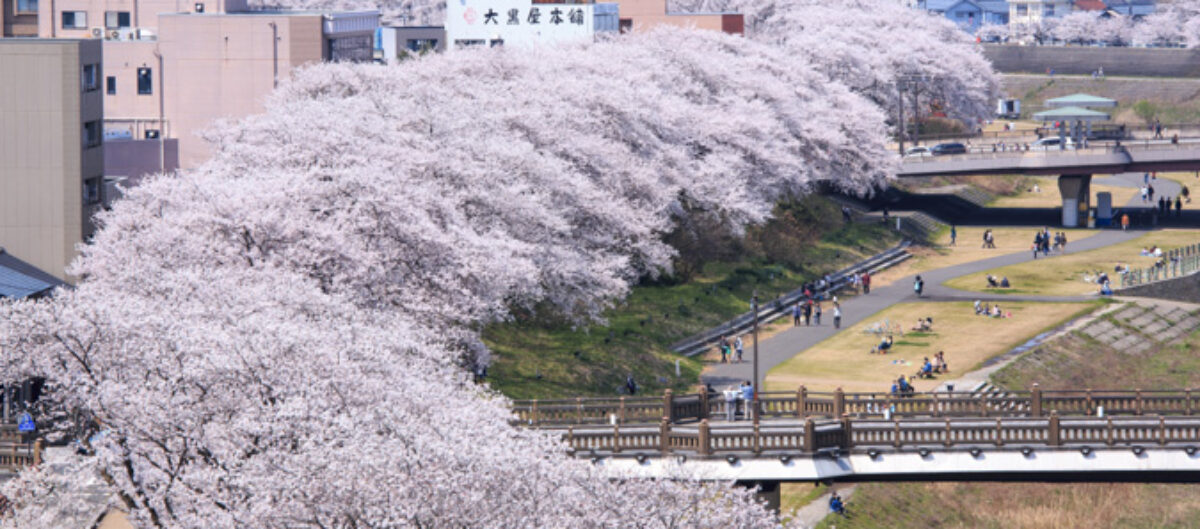

November/14/2020
Fukui Shrine has three characteristics.
- It’s dedicated to Matsudaira Shungaku.
- It’s a very modern Shinto shrine.
- There’s a ginkgo tree there that’s a symbol of Fukui.
Fukui Shrine, which is dedicated to Matsudaira Shungaku, was built in 1943. Matsudaira Shungaku (1828-1890) was one of the most famous feudal lords of the Fukui clan. He was known as one of the four remarkable Japanese feudal lords of the end of the Edo period(1603-1868). You can see a statue of him to the left of the main building of the shrine.

Fukui Shrine is a modern Shinto shrine and made of concrete. The building is simple, functional and rational and is very different from a typical Shinto shrine, which is mainly made of wood. A lot of tourists are surprised when they see this modern shrine. In 2022, the international academic organization DOCOMOMO selected Fukui Shrine to be included in the esteemed architectural list “Modern Movement Architecture in Japan” with the aim of preserving it for future generations.
There’s a tree that symbolizes Fukui in Fukui Shrine. I wrote about it before, so please read what I wrote.(The ginkgo tree in Fukui Shrine: The symbol of Fukui)
What’s a Shinto shrine? It’s a holy place for a god and a facility for Shinto religious services. Great men are enshrined as gods at Shinto shrines. In Japan, the word “shrine” often means a Shinto shrine.
What’s Shinto? It’s a religion that originated in Japan several thousand years ago. It has no religious texts, teachings or founder, and is a religion of nature. People who believe in Shinto think that gods exist in all things.
What’s the difference between Shinto shrines and Buddhist temples? Shinto shrines are Shinto facilities, while Buddhist temples are for Buddhism. Buddhism is a world religion that originated in India and came to Japan in the sixth century.
When do Japanese people go to Shinto shrines? They do so during festivals. Some people have wedding ceremonies at shrines. People who want to make a wish also go to a shrine. They pray at shrines for health, business prosperity, success in passing exams, and safe delivery of a child, especially on New Year’s Day.
I want to write about Fukui Shrine and how to pray at a Shinto shrine.

There’s a gate in front of Fukui Shrine called a torii. What’s a torii gate? What does torii mean? A torii gate is a gateway from the mundane to the sacred world. A torii is a symbol of a Shinto shrine. There are two torii in Fukui Shrine. Before going through the gate, you have to bow once in front of it to show respect for the sacred status of the shrine.
The pathway from a torii to the main building of a shrine is called the sando in Japanese. It’s believed that the god of the shrine walks in the center of the path, so people should walk on the side.

There’s a chozuya,or purification fountain, near the entrance to the shrine. This is a place where you wash your hands to purify your mind and body. You fill the dipper with water, pour it on your hands, and wash them.
The main building of the shrine, where you pray, is at the end of the pathway.

How to pray at a shrine:
- Put some money (between 5 and 100 yen) into the wooden box in front of the building.
- Slowly shake the rope to ring the bell near the box.
- Stand straight and bow twice. Clap twice in front of your chest, make a wish or offer a prayer, and bow once more.
If you pray at Fukui Shrine, you might become strong like a phoenix, which is a symbol of Fukui.
You can walk to Fukui Shrine from JR Fukui Station in about 15 minutes. There’s a statue of Okakura Tenshin near the shrine, and the ruins of Fukui Castle are nearby.
(References)
「福井県の歴史散歩」(編:福井県の歴史散歩編集委員会)(山川出版社)
「イチから知りたい!神道の本」(三橋 健)(株式会社西東社)
「福井新聞 2022年6月8日」
